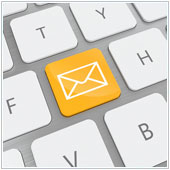 Email has become the go-to communication medium for businesses of all sizes. It's not uncommon to see people emailing one another when they could just as easily talk. While it is incredibly popular, many emails are poorly written, leading to confusion and both parties having to take time out of their busy days to clarify. This can make you unproductive, and the best way to stop this is by writing good emails to begin with.
Email has become the go-to communication medium for businesses of all sizes. It's not uncommon to see people emailing one another when they could just as easily talk. While it is incredibly popular, many emails are poorly written, leading to confusion and both parties having to take time out of their busy days to clarify. This can make you unproductive, and the best way to stop this is by writing good emails to begin with.
Here's six tips that can help ensure that the emails you send get your message across. By writing quality emails, you could see your productivity increase as you will have more time to do your work instead of clarifying sloppy emails.
1. Have a clear decision or action 99% of the emails you send are to ask someone to take an action, make a decision, reply etc. So, before you write any email pause for a minute and ask yourself: Why am I writing this and what do I want the recipient to do with this email?
If you can't provide a clear answer to these two questions, you may want to try contacting the recipient through another medium, or take some time to think and come up with an answer.
2. Write it backwards Once you know why you are writing your email, the actual writing becomes a lot easier. Because you will most likely be asking the recipient to do something, why not start with the request. Simply write down, in clear English, what you want done.
It's important to be as clear and direct as possible to avoid any confusion and potential follow up emails that will distract you. Once you have stated what you want, then you can provide justification to your request, or background information.
The reason this works is because many business owners/managers/employees are busy, they don't have time to read a whole report's worth of information that ends with a request. Most of the time they will just skip to the end anyways, so why not put the most important part - the action that you want them to take - at the beginning.
3. Use lists Many poorly written emails aren't actually poorly written. They are just formatted in an inefficient manner. In most English classes, students are taught to develop their ideas or arguments through logical paragraphs, while having only one point to each paragraph. Pause for a minute and think: If you get an email asking you to make a decision on what product to buy with five paragraphs each talking about a benefit or reason, would you actually read the whole email? Chances are the answer is no.
To be more efficient, break your ideas/reasons/arguments into a list. You can usually summarize the majority of main ideas of each paragraph into a single sentence. This makes them easier for you and the recipient to read.
4. KISS We don't mean you should kiss your monitor. In this context, KISS stands for Keep It Simple and Straightforward. You shouldn't have long essays or arguments with lots of padding. Get to the point immediately and provide the essential information.
If you find yourself writing an essay or long report, email is not the medium you should be using. Instead put your thoughts into a word document that you attach to the email. In the email itself put a brief overview along with the most important points and tell your recipient to check the attachment for more information.
5. Have a relevant subject line The subject of your email is like the title of a report or news article. Without a solid subject, the chances of your email being opened and read are low. It would be a good idea to write your whole email first, then the subject.
A good subject line can A) Interest the recipient enough to get them to open it and B) Provide enough insight so the reader can infer what you want. If you look over a subject line of an email you are about to send and see that it doesn't make sense or reference the email itself, it would be a good idea to re-write it.
6. Proofread everything This may make sense now, but we are all guilty of writing an email and pressing send without reading the content over. Once you hit send, the damage is done, you won't be able to get the email back. That's why it's a good idea to read over your email after you finish.
You should look for any obvious spelling and grammar errors along with ensuring that the content makes sense. If you think it's ok, then you can probably go ahead and send it. If you are the least bit hesitant, walk away from it for a few minutes then come back and read over it again. You will likely be able to see a couple of changes.
There are many options at your disposal that allow you to enhance your and your company's productivity. Contact us today to see how our systems can help.

 The dream of many an office worker is to have the option to work from home, either full time or a couple of days each week at least. For many, this is an opportunity to be closer to family and avoid what might be a long commute to work. Many companies have been happy to oblige, especially those in tech that have seen boosts to employee productivity, and benefits from increased flexibility. One major tech company looks on remote working less favorably though.
The dream of many an office worker is to have the option to work from home, either full time or a couple of days each week at least. For many, this is an opportunity to be closer to family and avoid what might be a long commute to work. Many companies have been happy to oblige, especially those in tech that have seen boosts to employee productivity, and benefits from increased flexibility. One major tech company looks on remote working less favorably though.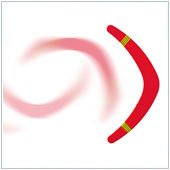 Productivity is something many business owners and their employees strive for. Most would be out of work if they weren't productive. Two of the most common productivity tools are email and the calendar. The only problem is email is usually separate from the calendar app and it can be a pain to switch between the two. If you are a Google Apps user, there is an app that brings the two together to help make you more productive.
Productivity is something many business owners and their employees strive for. Most would be out of work if they weren't productive. Two of the most common productivity tools are email and the calendar. The only problem is email is usually separate from the calendar app and it can be a pain to switch between the two. If you are a Google Apps user, there is an app that brings the two together to help make you more productive.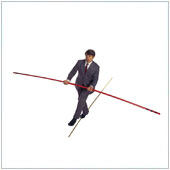 To many, the entrepreneur is viewed with admiration and jealousy. How come you have to work long hours for a company that doesn't really care about you while the entrepreneur gets to run their own life and have a seemingly perfect work-life? This view, as many business owners know, is often a laughable one as work-life balance can be non-existent. It doesn't have to be this way however and with a little work on your productivity you can actually get something akin to a good balance.
To many, the entrepreneur is viewed with admiration and jealousy. How come you have to work long hours for a company that doesn't really care about you while the entrepreneur gets to run their own life and have a seemingly perfect work-life? This view, as many business owners know, is often a laughable one as work-life balance can be non-existent. It doesn't have to be this way however and with a little work on your productivity you can actually get something akin to a good balance. The hard disk drive (HDD) has been an essential part of computers more or less since their inception. While they have gotten smaller and increased in capacity, they are quickly reaching a point where they won't be able to go any faster, hold any more or last any longer. There is a replacement already making a splash with some great advantages, the solid-state drive (SSD).
The hard disk drive (HDD) has been an essential part of computers more or less since their inception. While they have gotten smaller and increased in capacity, they are quickly reaching a point where they won't be able to go any faster, hold any more or last any longer. There is a replacement already making a splash with some great advantages, the solid-state drive (SSD).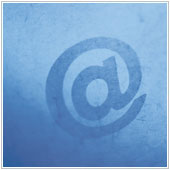 You've probably been sending emails for the better part of the past 15 to 20 years. They have become an essential communication tool, but did you know that there is a generally accepted etiquette when it comes to email? Most of us focus on certain rules when it comes to writing the body of the email, but few of us really look at the To; CC and BCC fields. Indeed, many people don't use these fields in the right way, which can lead to trouble in the future.
You've probably been sending emails for the better part of the past 15 to 20 years. They have become an essential communication tool, but did you know that there is a generally accepted etiquette when it comes to email? Most of us focus on certain rules when it comes to writing the body of the email, but few of us really look at the To; CC and BCC fields. Indeed, many people don't use these fields in the right way, which can lead to trouble in the future.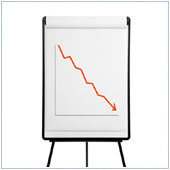 There is an 'instant' feeling to so much of what we do and expect to be done in life that this has kind of clouded the way we interact with one another. For example, if we receive an email, the sender expects an instant reply and if we don't reply within an often very narrow time frame, the sender will often move on. ‘Instant’ is a two way street, so while we have come to expect things to happen immediately, we often hate it when people want something right this minute. There is a danger this could become a big problem in the near-future.
There is an 'instant' feeling to so much of what we do and expect to be done in life that this has kind of clouded the way we interact with one another. For example, if we receive an email, the sender expects an instant reply and if we don't reply within an often very narrow time frame, the sender will often move on. ‘Instant’ is a two way street, so while we have come to expect things to happen immediately, we often hate it when people want something right this minute. There is a danger this could become a big problem in the near-future. Have you ever been sitting at your computer at work, buried up to your ears with somewhat trivial tasks and wished you could do all this from a more comfortable environment, or your home even? You’re not alone, and many professionals have switched over to a remote office, where they connect to work via the Internet. The one downside to this is it can be a chore for managers to ensure remote employees are productive.
Have you ever been sitting at your computer at work, buried up to your ears with somewhat trivial tasks and wished you could do all this from a more comfortable environment, or your home even? You’re not alone, and many professionals have switched over to a remote office, where they connect to work via the Internet. The one downside to this is it can be a chore for managers to ensure remote employees are productive. In the last productivity article we discussed using webinars in your company. Webinars are a great way to train people or increase interest in your brand or products and can help you reach a wider audience. If you’re interested in hosting a webinar there are a number of steps you should be aware of in order to make it a success.
In the last productivity article we discussed using webinars in your company. Webinars are a great way to train people or increase interest in your brand or products and can help you reach a wider audience. If you’re interested in hosting a webinar there are a number of steps you should be aware of in order to make it a success.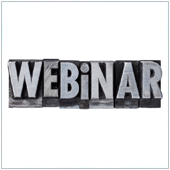 One of the most tiring things for small business owners is attending seminars and presentations. While they often give you great ideas on how to improve your business, they’re a tiring affair, especially when you have to travel to get to them. Technology has a great way for you to attend/conduct seminars via the Web, a webinar.
One of the most tiring things for small business owners is attending seminars and presentations. While they often give you great ideas on how to improve your business, they’re a tiring affair, especially when you have to travel to get to them. Technology has a great way for you to attend/conduct seminars via the Web, a webinar.
